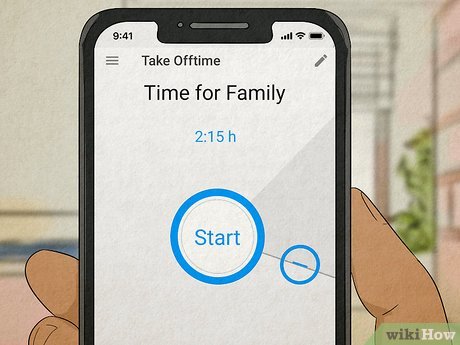The number one reason why people don’t open emails is because they don’t recognize the sender. Make sure your email list includes only people who have opted in to receive emails from you, and make sure your sender name and email address are consistent with the From name and address people see when they get your emails. You can also include a short preview of what’s inside the email by including a teaser sentence or two above the fold.
- Keep your subject lines short and to the point
- The shorter the subject line, the more likely people are to open it
- Make sure your subject lines are relevant to your audience
- If you’re sending an email about a new product, for example, make sure that’s clear in the subject line
- Use personalization in your subject lines when possible
- This could mean using the recipient’s name or adding a bit of humor that’s specific to them
- Avoid using common phrases like “check out my new blog post” or “this week’s newsletter
- ” These will likely get ignored by recipients who see them too often
- Test different subject lines to see what gets the best response from your audience
- Try A/B testing with different versions of a similar subject line to see which performs better before sending out your final email blast
4 Steps to Increase Your Email Open Rates
What Tip Helps Increase the Open Rate of Emails by 26 %?
Email open rates are notoriously difficult to increase. However, one simple tip that can help is to make sure your emails are mobile-friendly. In a world where people are constantly on their phones, it’s important to make sure your emails can be easily read and interacted with on a smaller screen.
This means using shorter paragraphs, larger font sizes, and clear call-to-actions.
Another way to improve email open rates is to personalize your subject lines. People are more likely to open an email if they feel like it’s relevant to them.
So, try to include the recipient’s name or company in the subject line. You could also use emojis in your subject line as they tend to stand out in a crowded inbox and can help convey the tone of your message.
Is a 30% Email Open Rate Good?
Email open rates can be a tricky metric to gauge. A 30% email open rate could be considered good, but it really depends on the industry you’re in and the quality of your list. For example, if you’re in a highly competitive industry with a lot of noise, then a 30% open rate may be considered average.
But if you have a very targeted list and are sending high-quality content, then a 30% open rate could be considered good. The key is to benchmark your own results against others in your industry to get a better idea of where you stand.
Is a 40% Email Open Rate Good?
Email open rates can vary greatly depending on the industry, but a 40% open rate is considered to be pretty good. Email providers typically report open rates within 24-48 hours of an email being sent, so you should be able to see how your own emails are performing relatively quickly. Keep in mind that there are a number of factors that can affect open rates (including the subject line, sender name, time/day of send, etc.), so even if your open rates are good, there’s always room for improvement.
Why is My Email Open Rate So Low?
If you’re finding that your email open rates are lower than you’d like, there could be a number of reasons why. In this blog post, we’ll explore some of the potential causes and offer some tips on how to improve your open rates.
One reason why your email open rate might be low is because your subject line isn’t effective.
Your subject line is the first thing recipients see when they receive your email, so it’s important to make sure it’s attention-grabbing and relevant to the content of your message. If your subject line is dull or doesn’t accurately reflect what’s inside your email, people are less likely to open it.
Another reason for low email open rates could be that you’re sending too many emails.
If people feel like they’re constantly being bombarded with messages from you, they’re likely to start ignoring them altogether. It’s important to find a good balance between keeping in touch and overwhelming people with too much communication.
Finally, another possibility is that your emails are going into recipients’ spam folders.
This can happen if you’ve been flagged for spamming in the past or if your emails contain certain keywords that trigger spam filters. If this is the case, there are steps you can take to ensure that your emails are delivered to inboxes instead of being automatically filtered out as junk mail.
If you’re concerned about low email open rates, consider these potential causes and try implementing some of the suggested solutions.
With a little trial and error, you should be able to find what works best for boosting those numbers up!

Credit: www.searchenginejournal.com
Words That Increase Email Open Rates
Email open rates are determined by a number of factors, including the subject line, sender name, and preview text. In order to increase your email open rate, you should focus on creating compelling and interesting subject lines that will make recipients want to learn more about what you have to say. Additionally, make sure your sender name is recognizable and trustworthy so that recipients are more likely to open your emails.
Finally, include relevant andinteresting preview text so that recipients know what they can expect from reading your email. By following these tips, you can create emails that are more likely to be opened and read by your intended audience.
How to Measure Email Open Rates
Email open rates are one of the most important metrics for measuring email marketing success. After all, if your emails aren’t being opened, then they can’t be read or acted upon. But what counts as a “good” open rate?
And how do you go about measuring your own email open rates?
Let’s start with some basics. An email open rate is simply the percentage of people who open an email campaign compared to the total number of people who received it.
So, if 100 people receive your email and 30 of them open it, your open rate would be 30%.
There are a few different ways to measure email open rates. The most common is using an image tag in the body of your email.
When the image is loaded by the recipient, it sends a signal back to your server that counts as an “open.” This method is not foolproof, however, as some users have images turned off by default in their email client (meaning the tag would never load and thus wouldn’t be counted).
+A more accurate way to measure opens is through a technique called pixel tracking (also known as web beaconing).
This involves embedding a tiny transparent image (usually just 1×1 pixels) in each email you send. When this image loads, it triggers a request back to your server that records an “open.” Pixel tracking can also give you valuable insights into things like what time of day your emails are being opened and whether they’re being opened on a mobile device or desktop computer.
Now that we know howemail open rates are measured, let’s talk about what constitutes a good open rate. Unfortunately, there isn’t really any magic number here – it varies depending on factors like industry and list size/quality (larger, more engaged lists tend to have higher open rates). That said, according to MailChimp data from 2018 , the average global Email Open Rate across all industries was 21%.
Anywhere above 20% is generally considered good; above 30% is considered excellent . Of course, these are just averages – so don’t fret if your own numbers fall below these benchmarks! There are plenty of other factors at play when it comes to overall engagement with your emails (like click-through rates and unsubscribe rates), so don’t get too hung up on achieving perfection with every metric .
How to Improve Click to Open Rate
It’s no secret that email marketers are always looking for ways to improve their click to open rate (CTOR). After all, a higher CTOR means more people are actually reading the emails you’re sending. And that can lead to more conversions and more sales.
So how can you improve your CTOR? Here are some tips:
1. Make sure your subject lines are attention-grabbing.
Your subject line is the first thing recipients will see when they receive your email. So it’s important to make sure it’s interesting and engaging. Otherwise, people may not even bother opening your email.
2. Keep your emails short and sweet.
People are generally busy and don’t have time to read long emails. So make sure your emails are concise and to the point.
Get straight to the point and avoid fluff or filler content.
3. Use images sparingly.
Increase Email Open Rate Subject Lines
The average person receives 121 emails per day. In order to stand out in someone’s inbox, you need to have an email subject line that is both interesting and informative. Here are some tips on how to write a subject line that will increase your email open rate:
1. Keep it short and sweet – The shorter your subject line, the more likely people are to read it. Aim for around 50 characters or less.
2. Be clear about what’s inside – Be upfront about what the email contains.
If you’re offering a discount, say so in the subject line!
3. Use personalization – Addressing the recipient by name is always a nice touch. It shows that you care about them as an individual, not just another number on your list.
4. Create a sense of urgency – Urgency works wonders when it comes to getting people to open an email. If there’s something time-sensitive inside, make sure to mention it in the subject line.
Email Open Rates Declining
Email open rates are declining for a variety of reasons. One reason is that people are becoming more savvy about email marketing and are using tools to filter out promotional emails. Another reason is that people are simply getting more email in their inboxes and are less likely to open every message they receive.
Finally, some research suggests that people may be growing tired of email as a communication tool and may be seeking other ways to stay connected.
Despite the decline in open rates, email remains an important part of many marketing plans. Email can still be an effective way to reach customers and prospects if it is used strategically.
For example, personalizing messages and making them relevant to the recipient can help increase the likelihood that they will be opened. In addition, sending emails at strategic times – such as when a customer is most likely to make a purchase – can also improve open rates.
Click-To-Open Rate
What is a Click-To-Open Rate?
The click-to-open rate (CTOR) is the number of unique clicks divided by the number ofunique opens. It measures how effective an email’s subject line and from line are in getting recipients to open the email.
A higher CTOR indicates that more people who saw the email opened it.
Why is Click-To-Open Rate Important?
The click-to-open rate is important because it measures how successful an email campaign was in getting recipients to actually open and click through the email.
A high CTOR means that people were interested in what you had to say and were more likely to take action on your call to action.
How To Improve Your Click-To-Open Rate
There are a few things you can do to improve your click-to-open rate:
1) Test different subject lines – This is probably the most important factor in whether or not someone will open your email. Make sure your subject lines are clear, concise, and make sense. You may also want to try A/B testing different subject lines to see which performs better.
2) Use a recognizable sender name – If people don’t recognize who the email is from, they’re less likely to open it. Make sure your “from” name is something that people will recognize as being associated with your brand.
3) Keep your emails short and sweet – No one wants to read a novel in their inbox.
Get straight to the point and make sure your message can be easily digestible.
4) Make use of images – People are more likely to engage with emails that contain images, so try incorporating some into yours where appropriate. Just make sure not to overdo it!
What Affects Email Open Rates
Email open rates can be affected by a number of factors, including the subject line, sender name, time of day sent, and email content.
The subject line is perhaps the most important factor in determining whether or not an email will be opened. A good subject line should be clear, concise, and to the point.
It should also be interesting enough to entice the reader to want to learn more.
The sender name is also important in determining whether or not an email will be opened. If the sender is someone that the recipient knows and trusts, they are more likely to open the email.
If the sender is unknown or appears to be spammy, the email is less likely to be opened.
The time of day that an email is sent can also affect its open rate. Emails sent during work hours are more likely to be opened than those sent outside of work hours.
This is because people are more likely to check their work email during work hours than they are at other times of day.
Finally, the content of the email can also affect its open rate. If the email contains information that is relevant and interesting to the recipient, they are more likely to open it.
However, if the email contains spammy or irrelevant content, it is less likely to be opened.
Email Open Rate Calculator
Email open rates are one of the most important metrics when it comes to measuring the success of your email marketing campaigns. After all, if no one is opening your emails, then they’re not going to be able to take any action on your call-to-actions (CTAs).
That’s why we’ve created this handy email open rate calculator.
Just enter in the number of emails you sent out, the number of people who opened your email, and voila! You’ll instantly get your email open rate.
But what is a good email open rate?
Unfortunately, there’s no easy answer to that question as it varies greatly depending on factors such as industry and list size. However, HubSpot has found that the average email open rate across all industries is about 20%. So if your open rate is above 20%, you’re doing better than average!
Want to learn more about how to improve your email open rates? Check out our blog post on 5 simple tips for increasing your email open rates.
Conclusion
If you’re like most people, you probably want to increase your email open rates. Luckily, there are a few simple things you can do to make your emails more likely to be opened by your recipients.
First, make sure your subject lines are interesting and relevant to the content of your email.
Your recipients are more likely to open an email if they know what’s inside it is something they’re interested in.
Second, avoid using too many exclamation points or other symbols in your subject line as this can come across as spammy.
Third, personalize your emails by including the recipient’s name in the subject line.
This makes the email feel more like a conversation than a generic marketing message.
Finally, don’t forget to test different subject lines and techniques to see what works best for you and your audience.



